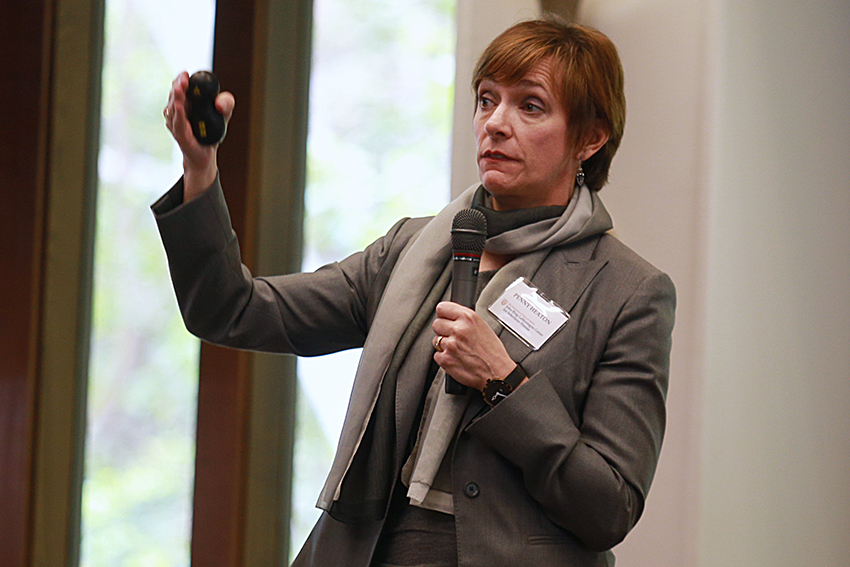While vaccines have been effective in lowering childhood mortality, disparities still remain between high-income countries and low-income countries.
On March 29, Penny Heaton, director of vaccine development at the Bill & Melinda Gates Foundation, gave a lecture about further reducing global childhood mortality and the current status of vaccine research and implementation. This lecture was part of the annual LaMontagne Lecture hosted by the UT Institute for Infectious Disease.
Heaton said that of the 6.6 million childhood deaths every year, about one-third can be prevented by vaccines and technologies that already exist. Heaton explained which of these technologies the Gates Foundation chooses to prioritize.
“We focus on the areas of greatest need where we can have the greatest impact,” Heaton said.
The Gates Foundation vaccine development division currently prioritizes eradicating polio, distributing more vaccines and treatment for pneumonia and rotavirus (which causes severe diarrhea), protecting babies through maternal immunization and looking to long-term solutions to HIV.
Heaton said that one big challenge is the time gap between vaccine approval in the United States and when these drugs get to the developing world. This gap is caused by insufficient and inappropriate vaccine supply. For example, some vaccines require lots of space in the refrigerator. Lack of refrigerator space isn’t a problem in the United States, but is a serious issue for healthcare outposts in the developing world.
“Vaccines are made for the first world or high-income countries without thought as to whether or not that is the right thing for a low-income country,” Heaton said.
Marvin Whiteley, director of the UT Institute for Infectious Disease and attendee, was intrigued by the social nature of these issues.
“It was interesting to learn that many of the challenges associated with providing vaccines to the developing world are not necessarily scientific challenges,”
Whiteley said.
During the talk, Heaton highlighted the fact that newborn baby deaths are decreasing at a much slower rate than general children mortality. Heaton said one solution is a maternal immunization strategy, which was approved by the FDA last year.
“What you can do is vaccinate the mother when she is pregnant with the infant, and she helps transfer antibodies across the placenta,” Heaton said. “Then you can then protect the infant in those first few years of life, when they are most vulnerable.”
Heaton also discussed the development of herd immunity, by which vaccinating one person causes rates of disease around them to decrease, both in pneumococcus and rotavirus.
“Not only do you see this huge disease reduction among children who got the vaccine, you also saw a similar reduction in their grandparents, and that has just been absolutely amazing,” Heaton said.
Heaton ended with current goals of adapting existing vaccines for children in low-income countries. She emphasized how collaborations between vaccine producers and developers would eliminate certain mistakes, such as inefficient dosage, drugs that are so expensive that they are unaffordable and not including the correct virus strains in the vaccines.
“These things sound simple, and they actually can be simple, but it’s a matter of making sure we are working together in an integrated fashion,” Heaton said.















